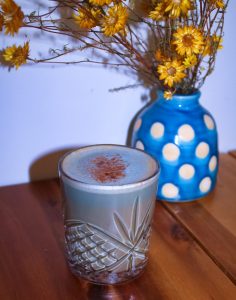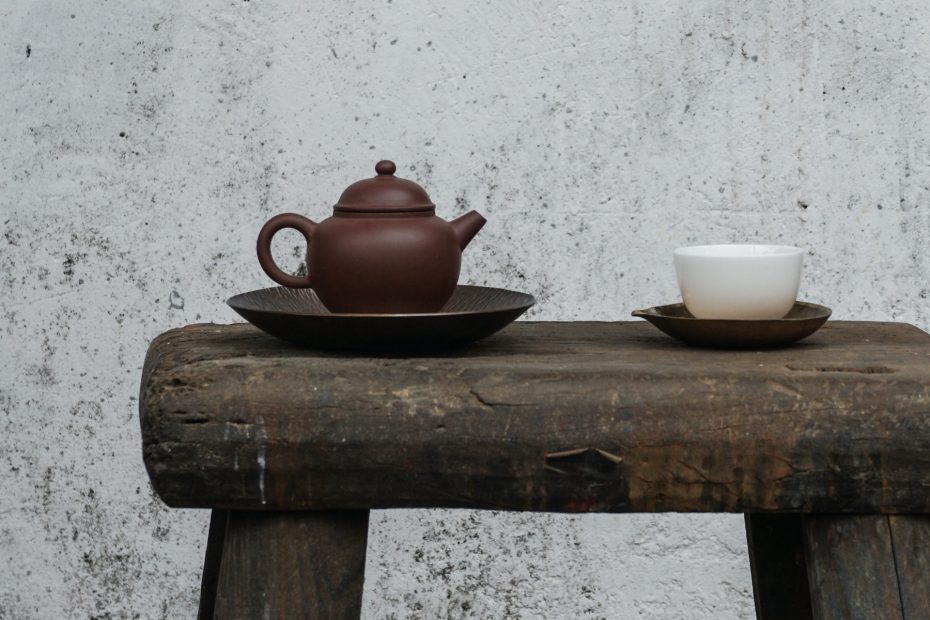Purple or blue drinks are usually ones we suggest you steer clear of due to the high likelihood of artificial colours and flavours. But this purply blue drink recipe by naturopath Christina Bodilly contains health benefits that will keep you coming back for more!
It’s the butterfly pea flowers that give the colourful hue. This is because butterfly pea flowers are packed with antioxidants, called anthocyanins.
With the weather cooling down, it is the perfect time to warm ourselves up with a chai latte. This Mermaid Chai not only tastes delicious but has the added benefit of improved digestion, balanced blood sugar levels, and reduced free radicals that cause chaos in our bodies.

This recipe will make up just over one and a half cups of Mermaid Chai Mix so you can have it on hand whenever you feel like a cup of Mermaid goodness!
How to Make a Mermaid Chai
Makes 1.5 cups
Ingredients:
- 1 cup butterfly pea flowers, chopped into small pieces
- 1/4 cup black tea (or vanilla rooibos tea for caffeine-free)
- 3 tbsp cardamom pods, crushed slightly
- 2 tbsp whole cloves
- 1 tbsp black peppercorns
- 4-6 cinnamon quills, crushed (ground cinnamon makes the chai much darker and less blue)
- 2 tbsp freshly grated ginger, or 1 tbsp dried ginger pieces
- 1 heaped tbsp vanilla bean powder or 1-2 vanilla pods scraped and chopped (optional)
To make the chai mix:
- Place all ingredients except the butterfly flowers onto a baking tray, preheat the oven to 80C and bake the spices for 30 minutes. Baking spices allow for more flavour to be released!
- Allow them to cool, then combine with butterfly flowers and black tea and place into an airtight jar. Optional: Mix 3-4 tablespoons of honey or agave through the mix to make a sticky chai mix.
To make a warm Mermaid Chai:
- Combine 2 tbsp of the chai blend with 350mL of your favourite plant-based milk.
- Steam or heat the milk in a milk frother or heat in a small pot on low heat for 6-8 minutes on your stovetop.
- Pour into a latte glass and sprinkle with cinnamon!
Reasons to love this recipe:
- Cinnamon has shown to reduce blood sugar levels and improve insulin activity when consumed daily
- Up to one tablespoon of honey daily has shown to have an anti-diabetic effect!
- Ginger improves digestion and helps to break down food for optimal absorption of nutrients
- Drinking black tea has a range of health benefits as it contains lots of powerful antioxidants and other compounds which have the potential to decrease inflammation and reduce the risk for the onset of chronic conditions.
- Butterfly tea is extremely high in antioxidants and may improve heart health
For more nourishing recipes, book a consultation with Whole Body Health & Wellness Naturopath, Christina Bodilly. Call 5200 1044 or book online here.
References:
Cianciosi, D., Forbes-Hernández, T. Y., Afrin, S., Gasparrini, M., Reboredo-Rodriguez, P., Manna, P. P., … & Battino, M. (2018). Phenolic compounds in honey and their associated health benefits: A review. Molecules, 23(9), 2322.
Maneesai, P., Iampanichakul, M., Chaihongsa, N., Poasakate, A., Potue, P., Rattanakanokchai, S., … & Pakdeechote, P. (2021). Butterfly pea flower (Clitoria ternatea Linn.) extract ameliorates cardiovascular dysfunction and oxidative stress in nitric oxide-deficient hypertensive rats. Antioxidants, 10(4), 523.
Rao, P. V., & Gan, S. H. (2014). Cinnamon: a multifaceted medicinal plant. Evidence-Based Complementary and Alternative Medicine, 2014.
Rasheed Z. (2019). Molecular evidence of health benefits of drinking black tea. International journal of health sciences, 13(3), 1–3.
Wong, P. Y., & Tan, S. T. (2020). Comparison of total phenolic content and antioxidant activities in selected coloured plants. British Food Journal.
Zadeh, J. B., & Kor, N. M. (2014). Physiological and pharmaceutical effects of Ginger (Zingiber officinale Roscoe) as a valuable medicinal plant. European journal of experimental biology, 4(1), 87-90.
